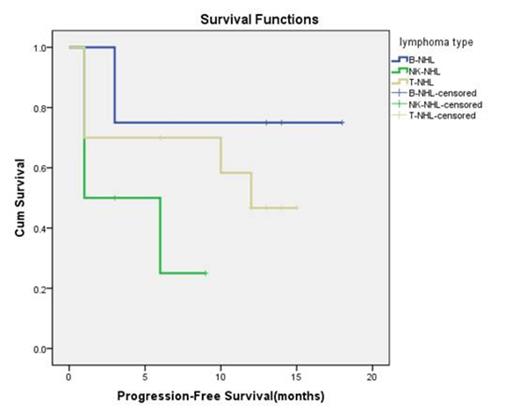Abstract

Hemophagocytic lymphohistiocytosis (HLH), also known as hemophagocytic syndrome (HPS) is characterized by cytokines storm and uncontrolled activation of macrophages. Secondary HLH in adults may occur in different occasions, including infections, autoimmune diseases, carcinomas and hematologic malignancies, in which Lymphoma-associated hemophagocytic lymphohistiocytosis(LA-HLH) has a high fatality rate and the worst outcome. The major cause of LA-HLH is aggressive non-Hodgkin's lymphoma (NHL), especially T/NKT cell lymphomas. Until now, there is no recommended therapeutic schedule for this fatal disease. Because of promising results of etoposide-containing regimen for HLH and high effective of continuous infusion chemotherapy regimen for aggressive NHL .The investigators therefore employed an intensive chemotherapy regimen--DA-EPOCH regimen (etoposide, prednisone, vincristine, cyclophosphamide, and doxorubicin) to treat non-Hodgkin's lymphoma with hemophagocytic lymphohistiocytosis and we have performed a preliminary analysis of this ongoing Phase 2 study and evaluated safety and efficacy of this regimen.
The clinical trial was designed as a prospective, multicenter, single-arm phase 2 clinical trial (NCT01818908). Enrolled patients included those with previously untreated NHL, and met the diagnostic criteria of either HLH2004 or ASH 2009 of HLH, patients with primary HLH and secondary HLH other than NHL were excluded. Therapeutic protocol of DA-EPOCH regimen was as follows: etoposide 50 mg/m2 CI 24h d1-d4, doxorubicin 10 mg/m2 CI 24h d1-d4, vincristine 0.4 mg/m2 CI 24h d1-d4, cyclophosphamide 750 mg/m2 IV d5, prednisone 60 mg/m2 oral d1-d5, If enrolled patient was histologically confirmed CD20+ B cell lymphoma, standard dose of rituximab will be recommended to combine with DA-EPOCH regimen. Drug dose was adjusted as previously described (Wyndham H. et al, 2002), each cycle of treatment was administered every 21 to 28 days according to recovery of toxicities. For patients who responded to the treatment and did not have disease progression, interim evaluation was conducted after 3 cycles of treatment.
At the time of analysis 26 patients were enrolled and 20 patients were eligible to evaluate. Patients were 60.0% (12/20) male with median age 44(range: 14-60), the age-adjusted international prognostic score (aaIPI) enrolled to study was high/intermediate (2 score) 10/20, high risk group (3 score) 10/20. Histologies were four B-NHL, ten T-NHL and six NK-NHL. The median number of cycles of therapy was 3, patients who had discontinued study were mainly due to rapid disease progression. The overall response rate (ORR) among treated pts was 50.0%, with 35.0% (7/20) of patients achieving CR/CRu and 15.0% (3/20) achieving PR, and 50.0% of patients (10/20) had PD. With the median follow-up of 8 months, progression-free survival (PFS) rate was 46.3% and in subgroup analysis, PFS of B-NHL, T-NHL and NK-NHL was 75%, 45.7% and 25% respectively (Fig. 1); Overall survival (OS) rate was 52.4%(Fig. 2) and 75.0%, 58.3%, 22.2% in subgroup of B-NHL, T-NHL and NK-NHL(Fig. 3). The most common grade ≥3 treatment-related side effects were hematologic toxicities including neutropenia and thrombocytopenia.
Lymphoma-associated hemophagocytic lymphohistiocytosis progresses rapidly and has a high mortality rate, our preliminary results suggest DA-EPOCH regimen has acceptable toxicities and promising activity in NHL with HLH, especially for B-NHL and T-NHL, but prognosis of NK-NHL with HLH remains dismal, urgent need for novel therapeutic strategies may benefit the survival of patients with this disease.
No relevant conflicts of interest to declare.
Author notes
Asterisk with author names denotes non-ASH members.

This icon denotes a clinically relevant abstract




This feature is available to Subscribers Only
Sign In or Create an Account Close Modal